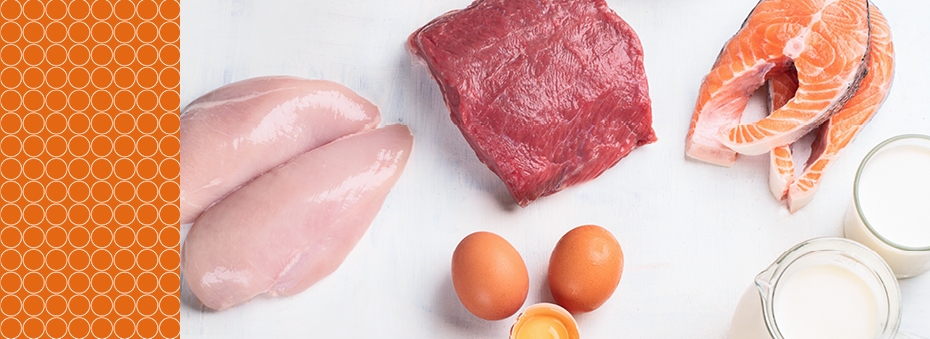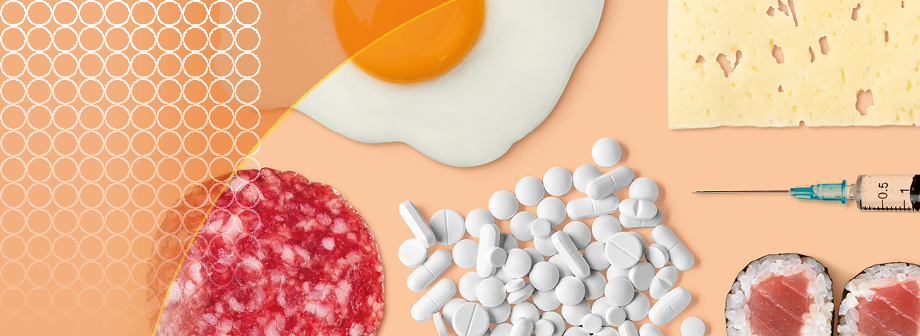
Residui e contaminanti
Rilevazione di residui di antibiotici, ormoni e anabolizzanti negli alimenti
Residui e contaminanti
Quando gli animali destinati all’alimentazione umana vengono trattati con antibiotici, ormoni o anabolizzanti, residui dei farmaci possono rimanere nelle loro carni o nel latte. Tali residui possono rappresentare un rischio per la salute dei consumatori.
I residui sono ciò che resta delle sostanze intenzionalmente utilizzate durante la produzione degli alimenti.” (Fonte: BFR). Queste includono farmaci per uso veterinario e pesticidi. Per ragioni di tutela dei consumatori molti Paesi hanno introdotto limiti massimi per i residui (LMR) e programmi di monitoraggio.
La nostra linea di prodotti comprende diversi sistemi analitici, come i saggi immunoenzimatici (ELISA), i test di inibizione microbiologica e le colonne di immunoaffinità per la rilevazione di ormoni, anabolizzanti, antibiotici e altri residui di farmaci in diverse matrici.
Antibiotici
Gli antibiotici sono metaboliti che si formano naturalmente e che derivano da funghi o batteri. Comprendono inoltre sostanze che non sono presenti in natura ma che vengono prodotte sinteticamente o mediante ingegneria genetica. Gli antibiotici sono in grado di uccidere i microorganismi o inibirne la crescita. In medicina umana e veterinaria gli antibiotici sono quindi utilizzati come farmaci per il trattamento di malattie di origine batterica.
Ormoni e anabolizzanti
I residui di ormoni e steroidi anabolizzanti in alimenti come la carne o il latte costituiscono un potenziale rischio per la salute dei consumatori. Gli ormoni sono messaggeri biochimici endogeni che vengono trasportati dal circolo sanguigno fino ai loro organi bersaglio. Oltre agli ormoni sessuali naturali, anche steroidi sintetici e beta-agonisti possono essere impiegati negli allevamenti per migliorare l’incremento ponderale medio e il rapporto carne/grasso.
Altri farmaci veterinari
Gli animali vengono occasionalmente trattati, oltre che con antibiotici e anabolizzanti, con farmaci di tipo differente che possono lasciare residui nel cibo. Questi comprendono fungicidi (per eliminare o inibire la formazione di funghi), antielmintici (per curare le infezioni da vermi parassiti), corticosteroidi (ormoni sintetici coinvolti in una varietà di meccanismi fisiologici), tranquillizzanti (per evitare fastidi da trasporto e stress nei suini) e coccidiostatici (per prevenire o curare la coccidiosi, una malattia parassitaria).
Contaminanti chimici
La contaminazione chimica degli alimenti pone gravi rischi per la salute e può essere causata da fonti di vario tipo; una delle più comuni è la migrazione di contaminanti dai materiali di imballaggio. Ne è un esempio il contaminante bisfenolo A (BPA), utilizzato nella produzione di policarbonati e in grado di contaminare il cibo tramite bottiglie o altri imballaggi in plastica. L’UE ha legiferato in merito, stabilendo un limite di migrazione specifico (SML) per il BPA.
Product portfolio
| Product | Descrizione | No. of tests/amount | Art. No. |
|---|---|---|---|
| RIDASCREEN® Nitrofuran (AMOZ) |
RIDASCREEN® Nitrofuran (AMOZ) is a competitive enzyme immunoassay for the quantitative determination of AMOZ in shrimp, fish, meat and poultry. Continua a leggere |
Microtiter plate with 96 wells (12 strips with 8 wells each) | R3722 |
| RIDASCREEN® Nitrofuran (AOZ) |
RIDASCREEN® Nitrofuran (AOZ) is a competitive enzyme immunoassay for the quantitative analysis of AOZ in shrimp, meat (chicken, pork, beef), liver (beef and pork), fish, whole egg and milk. Continua a leggere |
Microtiter plate with 96 wells (12 strips with 8 wells each) | R3703 |
| RIDASCREEN® Chinolone/Quinolones |
RIDASCREEN® Chinolone/Quinolones is a competitive enzyme immunoassay for the quantitative analysis of chinolones in egg, meat (beef, pork, sheep, chicken, turkey), fish and shrimp. Continua a leggere |
Microtiter plate with 96 wells (12 strips with 8 wells each) | R3113 |









